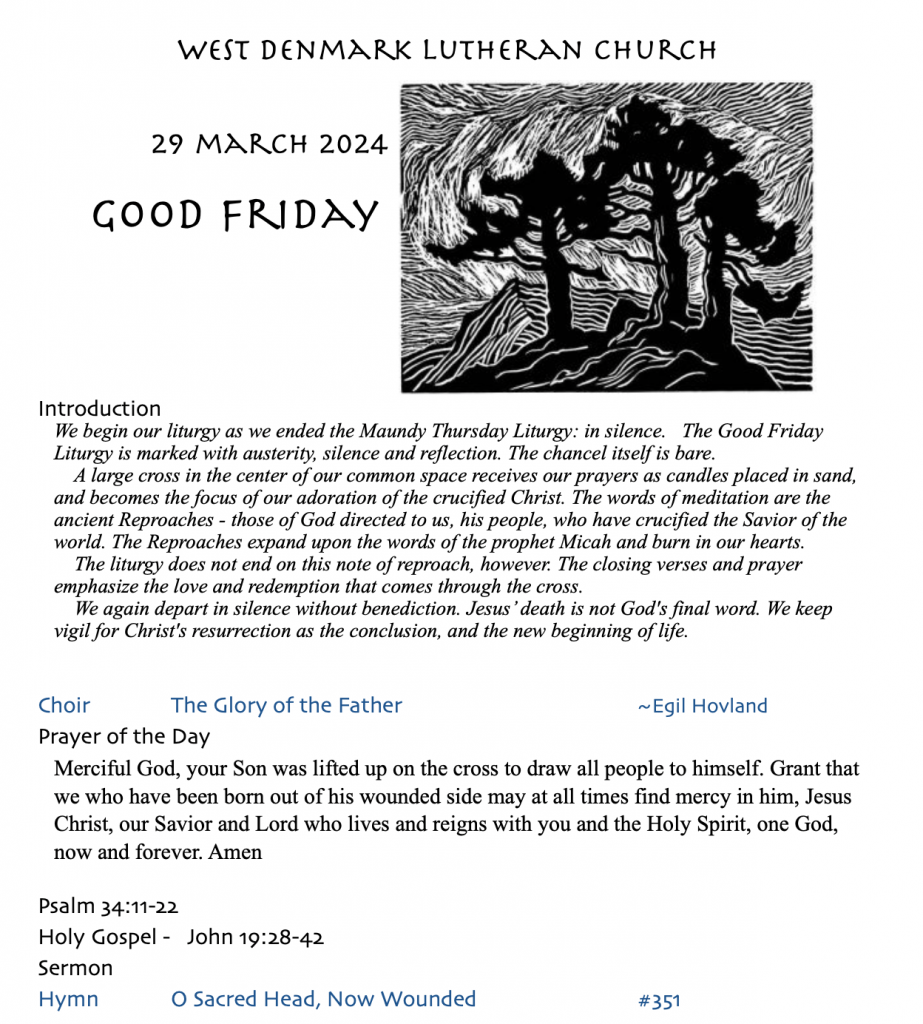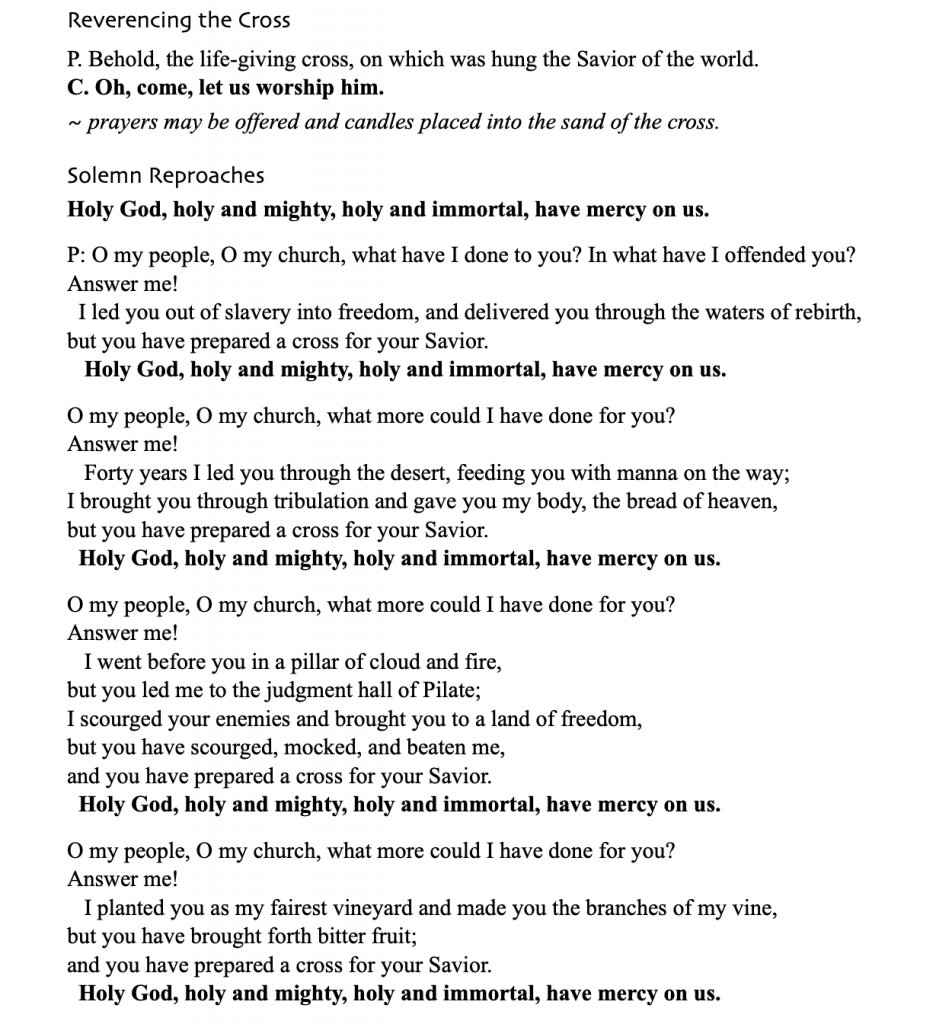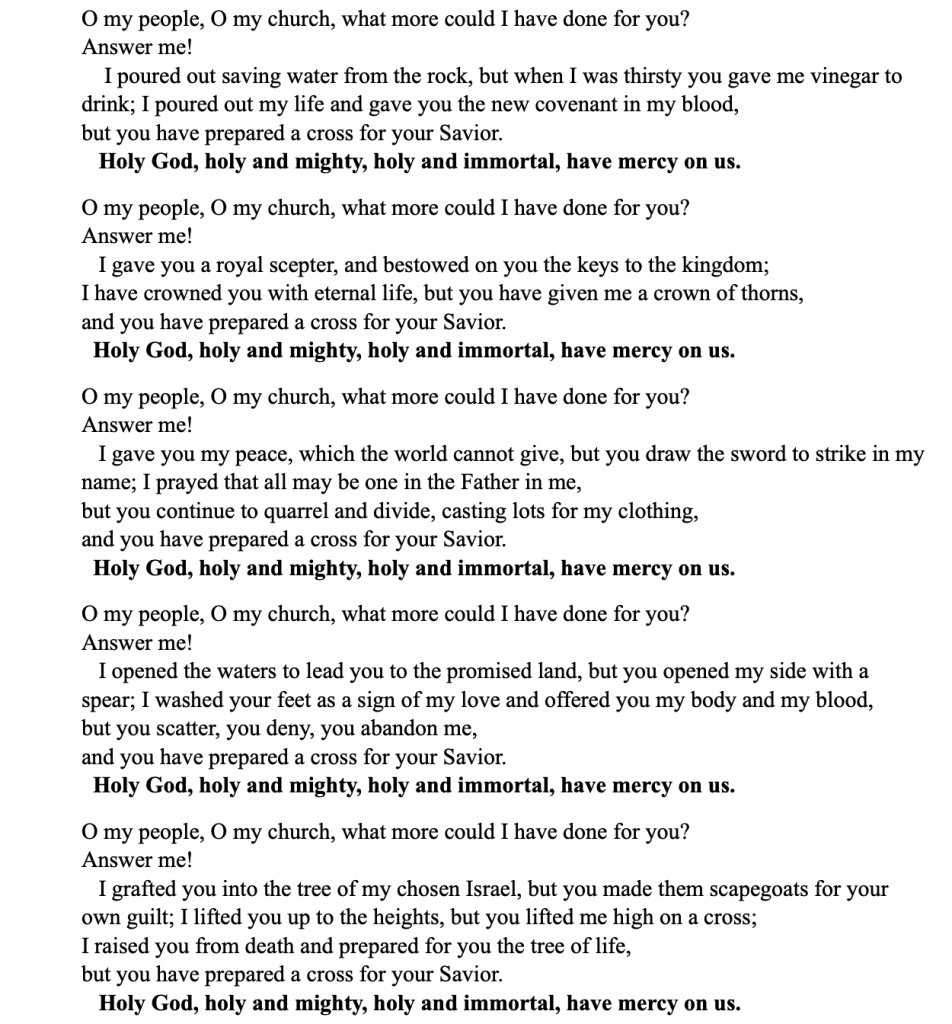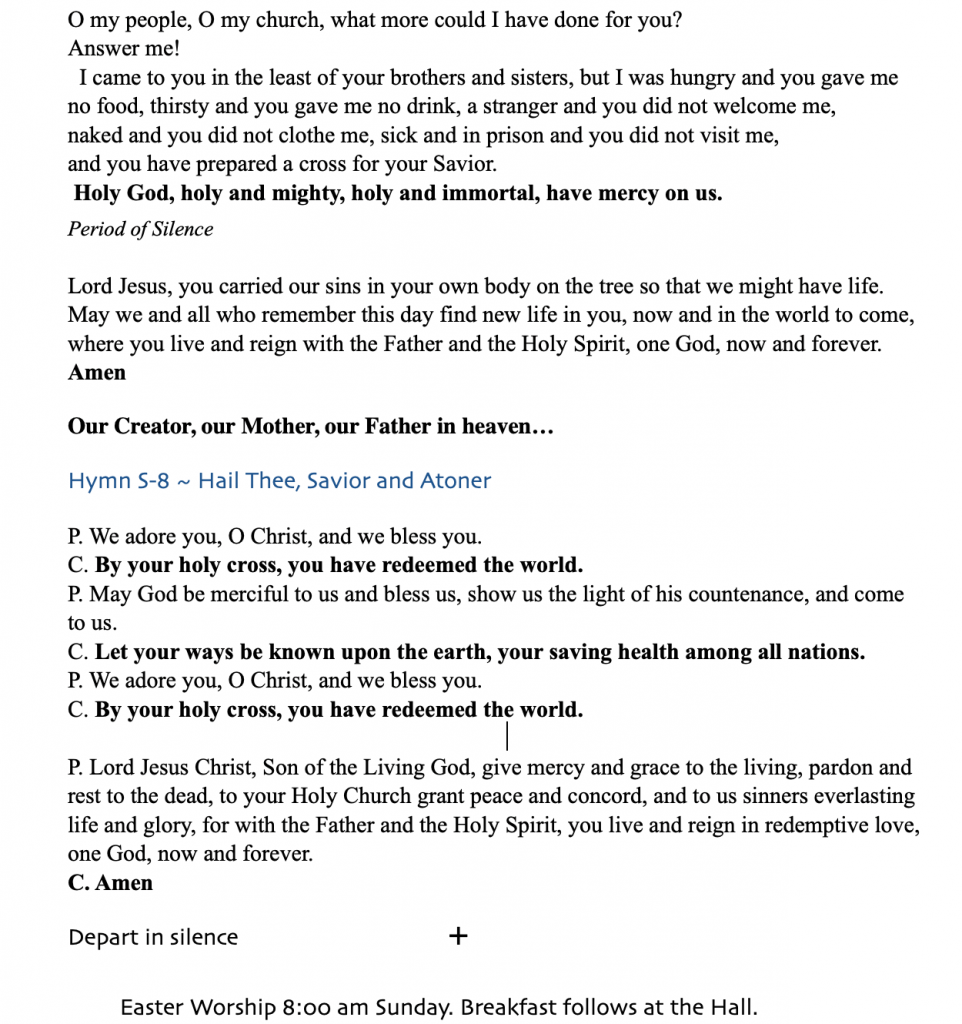



John 19:28-42
After this, when Jesus knew that all was now finished, he said, “I thirst.” A jar full of sour wine was standing there. So they put a sponge full of the wine on a branch of hyssop and held it to his mouth. When Jesus had received the wine, he said, “It is finished.” Then he bowed his head and gave up his spirit.
31 Since it was the day of Preparation, the Jews did not want the bodies left on the cross during the sabbath, especially because that sabbath was a day of great solemnity. So they asked Pilate to have the legs of the crucified men broken and the bodies removed. Then the soldiers came and broke the legs of the first and of the other who had been crucified with him. But when they came to Jesus and saw that he was already dead, they did not break his legs. Instead, one of the soldiers pierced his side with a spear, and at once blood and water came out. (He who saw this has testified so that you also may believe. His testimony is true, and he knows that he tells the truth.) These things occurred so that the scripture might be fulfilled, “None of his bones shall be broken.” And again another passage of scripture says, “They will look on the one whom they have pierced.”
38 After these things, Joseph of Arimathea, who was a disciple of Jesus, though a secret one because of his fear of the Jews, asked Pilate to let him take away the body of Jesus. Pilate gave him permission; so he came and removed his body.
39 Nicodemus, who had at first come to Jesus by night, also came, bringing a mixture of myrrh and aloes, weighing about a hundred pounds. They took the body of Jesus and wrapped it with the spices in linen cloths, according to the burial custom of the Jews. Now there was a garden in the place where he was crucified, and in the garden there was a new tomb in which no one had ever been laid. And so, because it was the Jewish day of Preparation, and the tomb was nearby, they laid Jesus there.
_______
The gospel of John narrates Jesus’ death with simplicity, dignity, solemnity. Here there is none of the turmoil or violence of the other gospels – no jeering crowds at the trial before Pilate, Jesus carries his cross bar by himself to Golgotha and without the crowd looking on. There is no conversation with crucified criminals or mocking by soldiers. Jesus does not cry out to God or make a loud cry at the end – in fact, the Synoptic gospel’s quotation from psalm 22 – “My God, my God, why have you forsaken me” is a theological impossibility for Jesus of this gospel. He and God are one from the beginning, united in work and in love. Their unity is strengthened, not broken, at Jesus’ death. The natural world perhaps pauses, waiting – but does not shake or moan or give in to the darkness.
There is poignancy and sadness at this scene, but there is not despair, not abandonment. Jesus is the mystical, incarnate Son of God, the one sent by God into the world to save the world by revealing God’s love. And this is Jesus, the man who dies on a cross, bleeding from his wounds and pierced side, wrapped in linen cloths and laid to rest in a garden tomb. In his death, Jesus lives out the life for which he was born and into which he was sent by bearing ultimate witness to the truth: that through him we are given what is most precious – true incorporation (being brought bodily into) the love of God.
The abundance of scriptural cross references confirm that this death is part of God’s plan for salvation from the beginning. His unbroken legs lead us to the psalter (psalm 34), his pierced side to Zechariah, but they also prove that he is truly dead… “and at once blood and water came out.” The emphasis on the eye witness is to confirm to readers that this actually happened…. and it is physiologically accurate of a chest wound after crucifixion.
The significance of water and blood is only partly for proof. The context from Zechariah (12:10) is both mourning and hope. In the midst of death God pours out “a spirit of compassion and supplication to the house of David, so that, when they look on the one whom they have pierced, they shall mourn for him, as one mourns for an only child, and weep bitterly over him, as one weeps for a firstborn.” In citing this passage, John both implicates those who remain blind to the presence of God, and offers hope, that even in death, when we look on the one who was pierced we see God’s only child, the firstborn of creation, who transforms death in love into life.
Jesus told the Samaritan woman he is the source of living water – in death, life flows from Jesus’ wounded side; his blood – linked to the original Passover – is not for forgiveness of sin, but to provide life – as blood from the original Passover lamb saved the Israelites from the final plague of death.
John is a master of evocative language – with words that conjure the imagery of salvation history in promises and hope.
Hope may seem a strange thing to be talking about on Good Friday, but it is true for this gospel.
We’ve been singing a few Advent hymns in Lent because they are appropriate for this gospel’s telling. Here’s another one: “All earth is hopeful, the Savior comes at last, furrows lie open (for the seed to be planted and grow) for God’s creative task; this, the labor of people who struggle to see how God’s truth and justice set everybody free.”
Joseph of Arimathea and Nicodemus are the characters of this struggle to see. Joseph was a member of the Sanhedrin – the Jewish Supreme Court – and a secret disciple of Jesus. He represents those who fear losing political power and influence within the synagogue and community if they openly confessed belief in Jesus. At Jesus’ death, however, Joseph is emboldened by the truth he now believes and makes his faith public. He embodies the risk, and openly claims discipleship. This was a hugely significant challenge for John’s original audience – the cost could involve being shunned, stoned, or killed as we know from the apostle Paul’s story and Stephen’s stoning.
The willingness to bury Jesus is seen by John as a confession of faith. Nicodemus first came to Jesus at night and left very much in the dark about Jesus’ identity. He later stood up for Jesus on the basis of fairness in hearing him out in a discussion among the pharisees. But here, now, Nicodemus abandons neutrality and secrecy and acts out of love and with great reverence.
The prodigious amount of burial spices – 100 pounds – could be again seen as a proof offering – it would be enough to keep Jesus pinned down … but consider its fragrance. 100 pounds of myrtle, of myrrh, of sweet aloes. That fragrance would have filled and overpowered, and out-flowed this newly carved cave like the excess of pure nard that Mary poured over his feet, anointing them with her hair. This is an act of utter devotion and all-in love.
Joseph, Nicodemus, and Mary prove themselves to be true disciples as they live out of love. Jesus’ body is handled with care and dignity in its preparation. John makes note that it is the Day of Preparation – on one level it is the day before sabbath begins at sundown, on a higher level, it is the day Jesus is prepared. Linen burial cloth was normally accorded only to those of wealth and high standing, the pristine condition of the garden tomb adds to the dignity and beauty of their treatment of Jesus’ body.
The scent of burial spices, the scent of earth, fresh clay, the garden setting pull us back to the beginning. “In the beginning, when the world was a formless void…” pull us back to the beginning -“In the beginning was the Word….and the Word was with God in the beginning and through him all things were made… In him was life…
It is over, but it’s not. There is sorrow, but also the new beginning, deepening commitment, growing awareness of the scope of God’s involvement and presence. How are we to live in this love?
There is no single or simple answer.
But there is this story of Jesus’ life and death, and the characters who fill it, who, in one form or another all live within us. These gospel characters are part of each of us. Their motivations and fears and excitement and hesitancy, doubt, blindness – are ours as well. To this story we come back to again and again in the words of liturgy, in song, and faith.
Through the story of God’s love for the world – often hostile and apathetic – Jesus’ love comes as a glimmer of what it means to be community, what it means to beloved, what it means to know God in the midst of life and struggle, pain and death.
“From his fullness we have all received… grace upon grace.